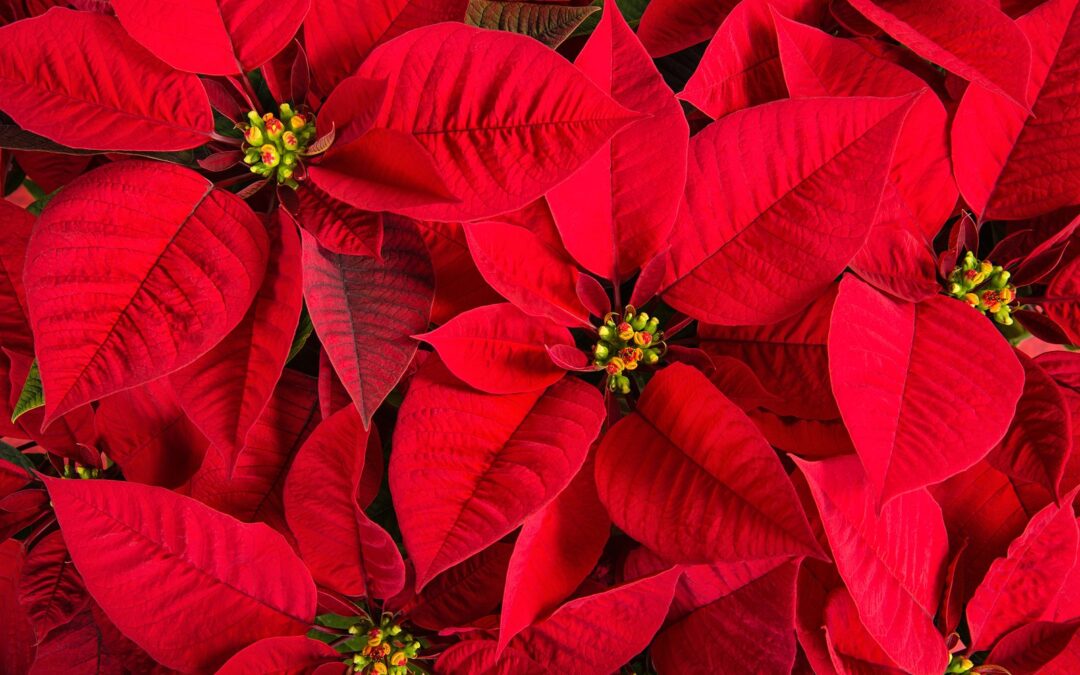Poinsettia time! Happy Holidays!
“Its beginning to look a lot like Christmas….” The poinsettias are here! Nothing brightens an office in December like a huge bright red poinsettia plant or two (or twenty!) Each year at this time, thousands of poinsettias are delivered to offices throughout the GTA. We receive questions daily about how to keep them looking beautiful throughout the season. Here are a few tips and interesting facts about these festive additions to your office.
From Aztec Symbolism to Holiday Icon
The poinsettia, a vibrant symbol of the Christmas season, has a fascinating history that dates back centuries.
- Aztec Origins: The Aztecs, who called the plant “cuetlaxochitl,” prized it for its medicinal properties and its vibrant red color, which they associated with purity. They used the plant’s sap to treat fevers and the colorful bracts for dyes.
- Spanish Influence: When the Spanish arrived in Mexico, they incorporated the poinsettia into their Christmas celebrations. The plant’s blooming period coincided with the Christmas season, making it a natural choice for festive decorations.
- American Introduction: Joel Roberts Poinsett, the first U.S. Minister to Mexico, was captivated by the plant’s beauty. In the 1820s, he brought cuttings back to the United States, where it eventually became known as the “poinsettia.”
The poinsettia is native to Mexico, where they grow to heights of 10 feet or more and bloom naturally along the countryside. They are grown here in Canada in specialized greenhouses and are forced into bloom late November. With proper care, poinsettias will keep their colour for weeks. Poinsettias are part of the Cactus family; the botanical name is Euphorbia pulcherrima. They are available in many unique colours; red, white, pink, marble (pink and white), and Jingle Bells (red with white spots)
Choosing a Healthy Plant
If you are selecting the flowers yourself, purchase a poinsettia that appears strong and healthy, with large, brightly coloured flowers, and abundant dark green leaves. Make sure the small yellow flowers in the center are still visible. Do not purchase plants that are displayed with the plastic sleeves pulled up around the plant. The sleeves should be used only for transport. Remove them as soon as the plants are in your home or office. Protect the plants from the cold at all costs. They are very sensitive and will quickly drop their leaves and wilt if exposed to the cold.
Poinsettia Care
Check the soil before watering, it should feel just a bit moist. Never let the soil dry out. Poinsettias may need water daily, depending on the temperature and humidity in the room. Discard any water that may be in the bottom of the pot or saucer after watering. Place the plant in medium light, away from bright direct sun, draughts or direct heat.
Poinsettias are meant to be enjoyed in full bloom. |In an office environment, it is best to discard them after the blooms have faded as they will eventually lose most of their leaves and will detract from the appearance of the rest of your plantscape. If you have a poinsettia in your home, you may want to try to get the plant to rebloom.
How to Encouraging Reblooming
While it may seem challenging, with the right care, you can encourage your poinsettia to rebloom the following year. Here’s a general guide:
- Short-Day Treatment: To induce blooming, the poinsettia needs a specific light cycle. For about 10 weeks, ensure the plant receives 12 hours of complete darkness each night. This can be achieved by covering the plant with a box or placing it in a dark room.
- Temperature Control: Maintain a consistent temperature between 65°F and 75°F (18°C to 24°C).
- Watering: Water your poinsettia regularly, but avoid overwatering. Allow the soil to dry slightly between waterings.
- Fertilizing: Feed your plant with a balanced liquid fertilizer every two weeks during the growing season.
- Pruning: After the holiday season, prune your poinsettia to encourage new growth.
- Patience: Reblooming can take time and effort. Be patient and consistent with the short-day treatment.

